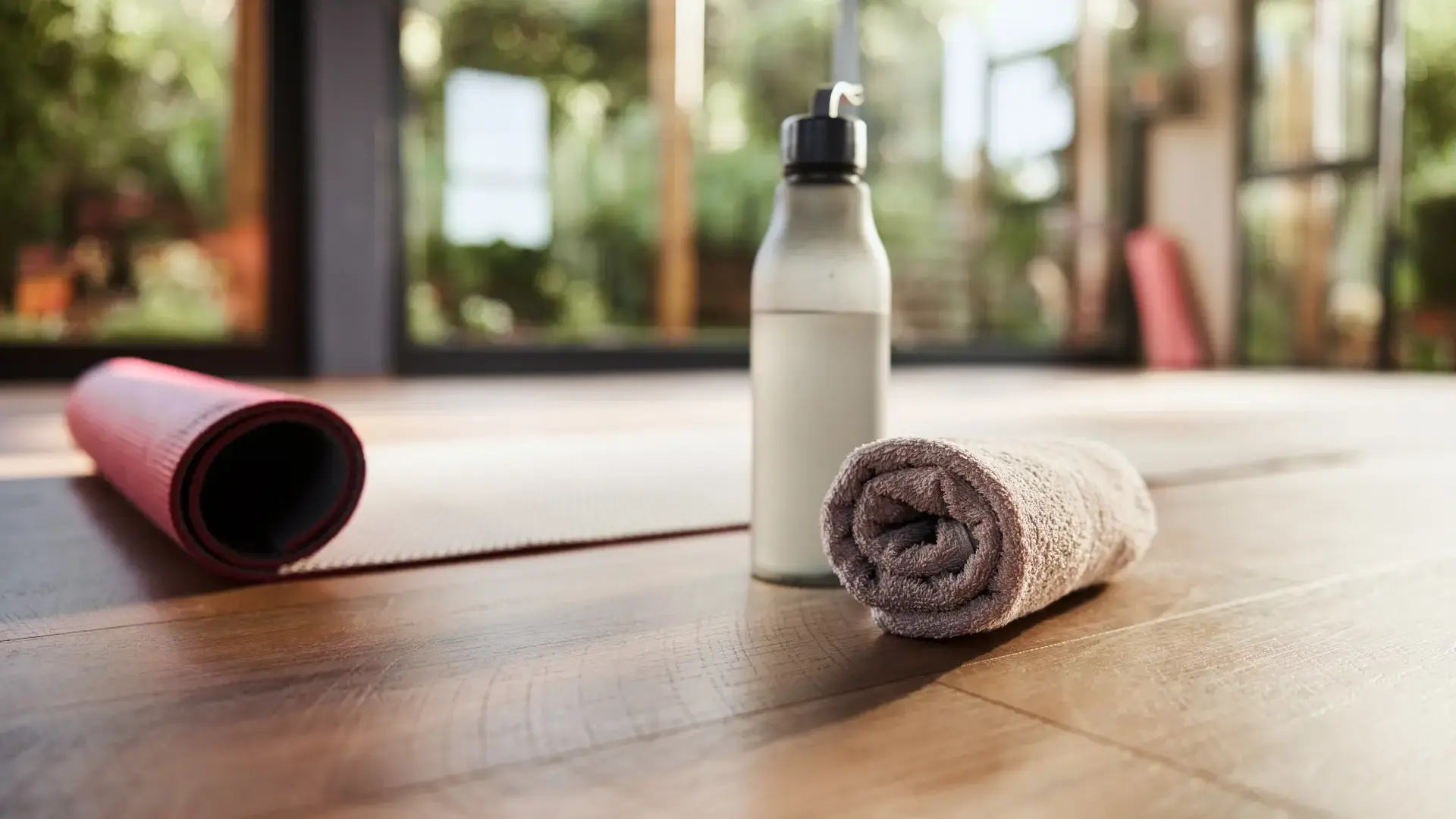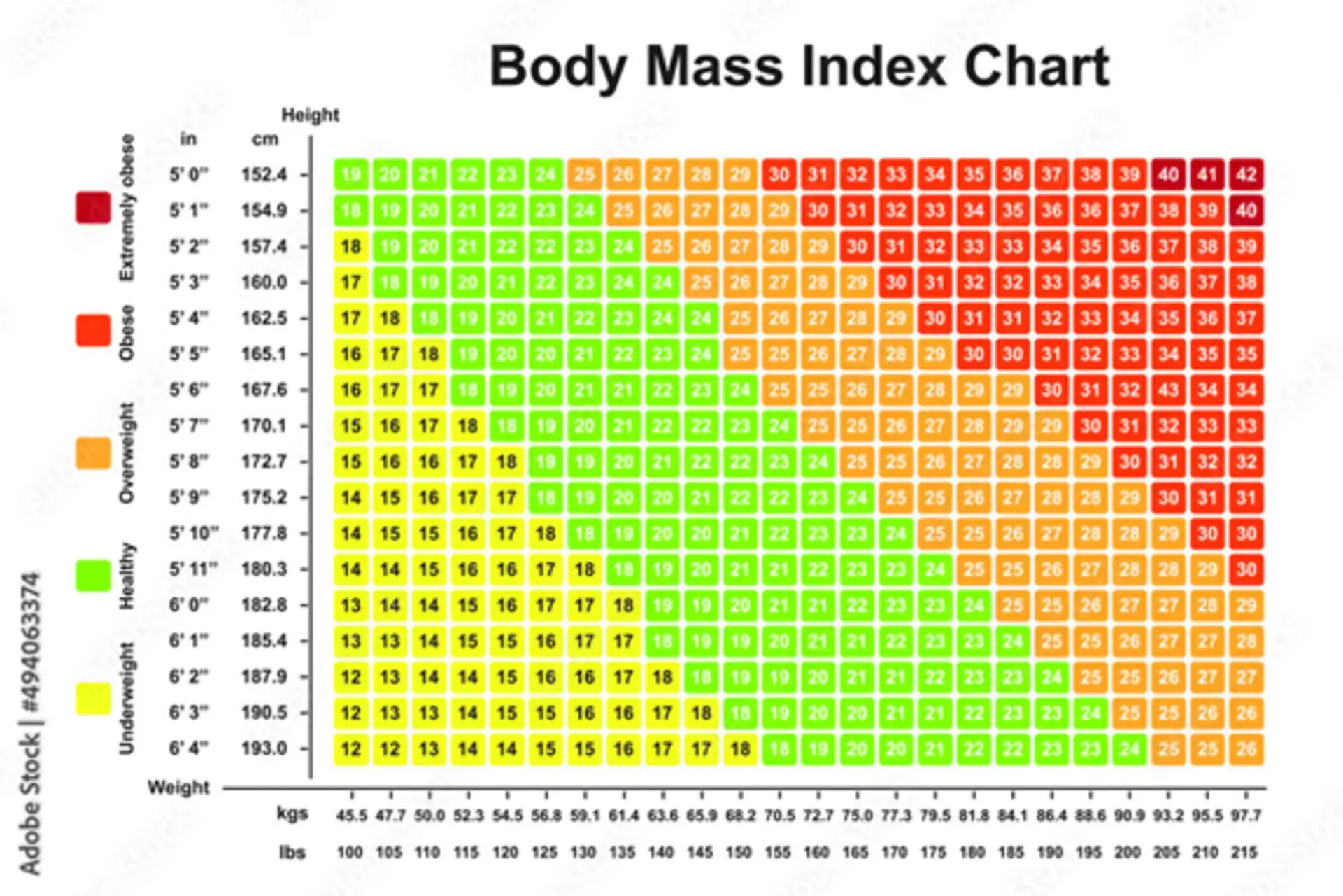What’s your motivation for moving? Sometimes, it's simply wanting to fit into your clothes better. To others, it could be mitigating possible health conditions. It might even be because it’s a growing fad! No matter what our reasons may be, choosing to increase our regular movement is a net positive change in our health.

Balancing BMIs
Want to get a good feel of your current body’s fitness state? Check where you land on the BMI chart. The Body Mass Index, or BMI, is a handy tool to know if you’re over or under the recommended weight in relation to your height. Here’s what a BMI chart looks like:
Just look for your height and see where the angle aligns with your current weight. There are colors that represent being just right, overweight, or underweight. If you’re in the safe zone, great! If it says you’re overweight, there are a couple of reasons why you don’t need to sweat it just yet. There are some factors that can affect your weight at certain times, like having a meal or drinking a lot of water prior to weighing yourself.
Another factor is muscle mass. If you’ve lifted a dumbbell or two, chances are your muscles have grown a bit. That can add a few more numbers into the calculation.
Regardless of these factors that can affect the fluctuation of your weight, the BMI chart is a handy tool to gauge what you need to do to better your stats.
Most of the time, it’s simply moving around more.
Calories in, Calories out
Ah, the big C of fitness, but calories are nothing to be afraid of. To put it simply, calories are energy. If you don’t spend it, you keep it. The more you keep it in, the more it grows.
The human body, even when sitting perfectly still, expends energy to keep your body running, like breathing, digesting, even reading this article. Going on a diet may help you control the calories going in, but we think that exercising is a little bit more fun—and tastier too, considering all the food you’re generally allowed to eat!
Choose How you Move
Would you believe how big of a benefit simply walking around is for weight loss? Taking 5,000 to 10,000 steps daily is such a simple way to better your health. A lot of online fitness coaches highly recommend it—and it’s not even a sport! Imagine what a combination of daily steps plus regularly engaging in a sport or exercise of your choice would do for your body!
Here’s a handy table to check the number of calories some exercise activities burn in an hour. Just multiply your weight with the calorie value to get the energy expenditure per hour.
|
Sport |
Energy consumption in kcal per kg body weight per hour |
|
Dancing |
4.0 |
|
Gymnastics |
2.0 |
|
Hiking |
6.0 |
|
Playing Golf |
4.0 |
|
Steady Cycling |
6.0 |
|
Walking |
8.0 |
|
Swimming, breaststroke |
10.0 |
|
Aerobics |
8.0 |
Source: (Nestlé)
The Right Kind of Fuel
Remember when we said dieting combined with exercise works? You should also consider what you eat. Nutrient-dense and fiber-rich foods are great choices to have in your diet.
Contrary to popular belief, sugar is not the enemy. When consumed in moderation, it’s a source of energy. Want to satisfy your sweet tooth? Choose fruits over candy! They may have the same amount of sugar content, but fruits have dietary fiber and vitamins that candies don’t.
The occasional ice cream won’t hurt as well if you’re regularly exercising and controlling what you eat daily. Makes life a little sweeter, yes?
Perhaps the most important tip that we can give you is to BE PATIENT. Depending on your goals, this may be a project without an end in sight—and that’s great! Embrace the journey and remember that true fitness and good health are not achieved overnight. Consistency and perseverance are key to lasting changes and a healthier, more fulfilling life.






